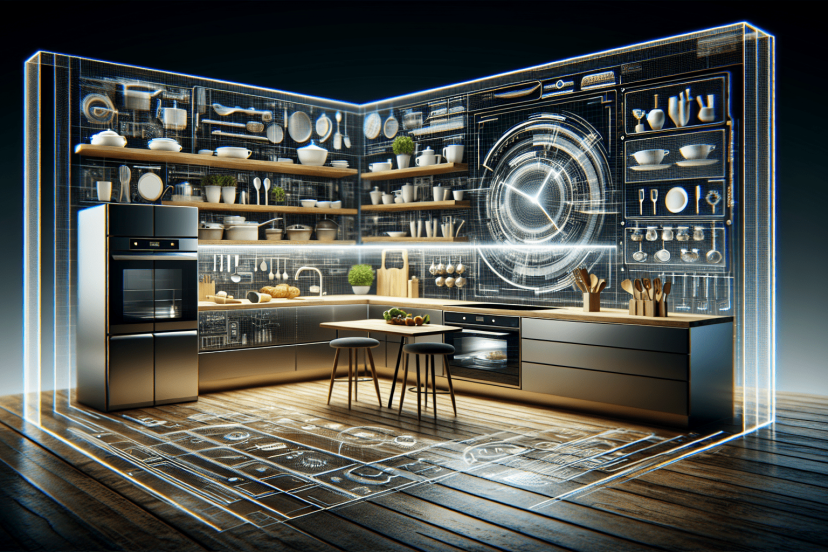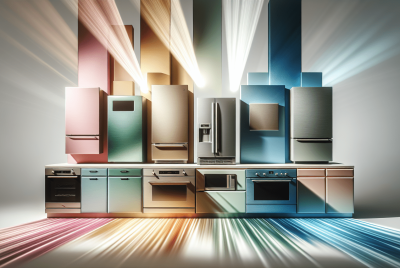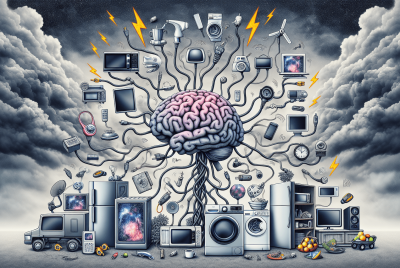What Is Next For Kitchens?
Have you ever wondered how our kitchens will evolve in the future? With advancing technology and changing lifestyles, the possibilities seem endless. From smart appliances to sustainable materials, the future of kitchens holds exciting prospects. In this article, we will explore the latest trends and innovations that are shaping the kitchens of tomorrow. Get ready to envision a kitchen that not only meets your needs but also enhances your overall experience in the heart of your home.
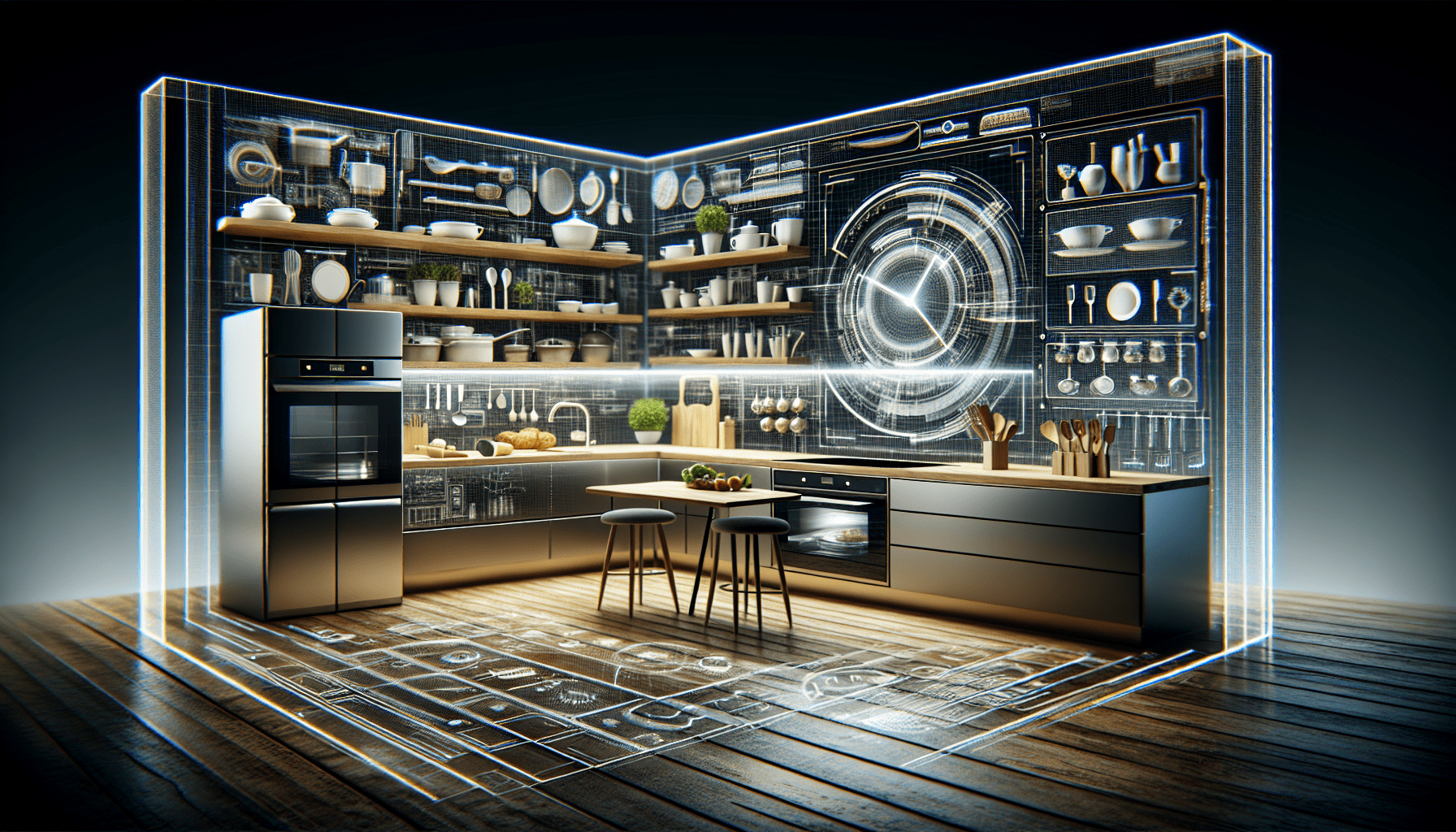
Sustainable Materials
Introduction to sustainable materials
In today’s world, sustainability is becoming increasingly important in all aspects of our lives, including our kitchens. Sustainable materials are those that are ethically sourced, manufactured using environmentally friendly processes, and have a minimal impact on the Earth’s resources. By incorporating sustainable materials into kitchen design, you can create a space that not only looks beautiful but also helps to protect the environment.
Benefits of using sustainable materials in kitchens
Using sustainable materials in kitchen design has numerous benefits. Firstly, it helps to reduce our carbon footprint by minimizing the use of non-renewable resources. By opting for materials such as bamboo, reclaimed wood, or recycled glass, you can contribute to the conservation of forests and reduce the demand for mining operations. Secondly, sustainable materials are often more durable and long-lasting, meaning they require less frequent replacement, resulting in less waste. Lastly, by choosing sustainable materials, you can create a healthier living environment for you and your family, as many non-sustainable materials can emit harmful chemicals into the air.
Examples of sustainable materials for kitchen design
There are various sustainable materials available that can be used in kitchen design. One popular option is bamboo, which is a rapidly renewable resource known for its strength and durability. Bamboo can be used for flooring, countertops, and even cabinets, providing a natural and sustainable alternative to traditional materials. Another sustainable choice is reclaimed wood, which gives a rustic and unique look to kitchen surfaces while reducing deforestation. Additionally, recycled glass countertops and tiles are gaining popularity for their eco-friendly properties as they are made from post-consumer glass waste. These examples demonstrate the wide range of sustainable materials available for creating an environmentally conscious kitchen.
Incorporating sustainable materials in kitchen appliances
In addition to using sustainable materials in kitchen surfaces and fixtures, it is also important to consider sustainability when selecting kitchen appliances. Look for appliances that are energy-efficient, as this not only reduces your energy consumption but also lowers your utility bills. Many companies now offer appliances with eco-friendly features, such as low water usage, efficient insulation, and smart technology that optimizes energy use. By making conscious choices when selecting appliances, you can further enhance the sustainability of your kitchen and contribute to a greener future.
Smart Appliances
Explanation of smart appliances
With the rise of technology, our kitchens are becoming smarter than ever. Smart appliances are equipped with advanced features that allow them to connect to the internet, communicate with other devices, and be controlled remotely. These appliances are designed to make our lives easier, more convenient, and more efficient in the kitchen. From refrigerators that can create shopping lists to ovens that can be preheated from your smartphone, smart appliances are revolutionizing the way we interact with our kitchens.
Advantages of smart appliances in kitchens
Smart appliances offer numerous advantages in kitchen design. Firstly, they provide convenience by allowing you to control and monitor your appliances from anywhere. Forgot to turn off the oven before leaving the house? No problem, simply check the status of your oven using your smartphone and turn it off remotely. Secondly, smart appliances can help save time and energy by automating certain tasks. For example, smart refrigerators can alert you when groceries are running low or when food is about to expire, saving you from unnecessary trips to the grocery store. Lastly, smart appliances can enhance safety in the kitchen. Many smart ovens have built-in sensors that can detect smoke or excessive heat and automatically shut off, reducing the risk of accidents.
Popular smart appliances for modern kitchens
In recent years, several smart appliances have gained popularity among homeowners looking to upgrade their kitchens. One of these is the smart refrigerator, which features a touch screen display, cameras that allow you to see inside the fridge from your phone, and the ability to create shopping lists and order groceries directly from the fridge. Another popular smart appliance is the smart oven, which can be controlled remotely, has pre-programmed cooking settings for different dishes, and can even suggest recipes based on the ingredients you have. Other examples include smart dishwashers that optimize water usage based on load size and smart coffee makers that can be controlled using voice commands.
Integration of smart appliances with voice assistants
To further enhance the capabilities of smart appliances, many are now compatible with voice assistants such as Amazon Alexa or Google Assistant. This integration allows you to control your appliances with simple voice commands, making cooking and managing your kitchen even easier. For example, you can ask your voice assistant to preheat the oven to a specific temperature, start brewing coffee, or check the status of your dishwasher. By integrating smart appliances with voice assistants, you can create a truly connected and hands-free kitchen experience.
Automation and Robotics
Overview of kitchen automation and robotics
Automation and robotics are playing an increasingly important role in modern kitchens. Automation refers to the use of technology to automate tasks and processes that would otherwise require manual labor, while robotics involves the use of robots and automated systems to perform specific functions. In the kitchen, automation and robotics can streamline cooking and cleaning processes, making them faster, more efficient, and less labor-intensive.
Advancements in automated cooking and cleaning
In recent years, there have been significant advancements in automated cooking and cleaning technologies. For example, there are now robotic sous chefs that can chop, dice, and slice ingredients with precision, saving you time and effort in meal preparation. Automated cooking appliances, such as smart multicookers and self-stirring pots, can also take care of cooking tasks, allowing you to focus on other activities. When it comes to cleaning, robotic vacuum cleaners and mops have become increasingly popular, taking care of the tedious task of cleaning floors autonomously.
Benefits of automated systems in the kitchen
The use of automated systems in the kitchen offers several benefits. Firstly, it saves time and effort by automating repetitive and time-consuming tasks. This allows you to spend more time enjoying your meals and less time on preparations and cleanup. Additionally, automated systems can improve accuracy and consistency in cooking. For example, a smart oven with precise temperature control ensures that your dishes are cooked to perfection every time. Furthermore, automation can contribute to a safer kitchen environment by minimizing the risk of accidents and injuries associated with manual tasks.
Future possibilities for robotics in the kitchen
As technology continues to advance, the possibilities for robotics in the kitchen are virtually limitless. In the future, we can expect to see robots capable of performing more complex tasks, such as meal planning, grocery shopping, and even washing dishes. Imagine a robot that can scan your fridge, identify the ingredients you have, and suggest recipes based on what’s available. Such advancements in robotics have the potential to revolutionize the way we interact with our kitchens, making them even more efficient and user-friendly.
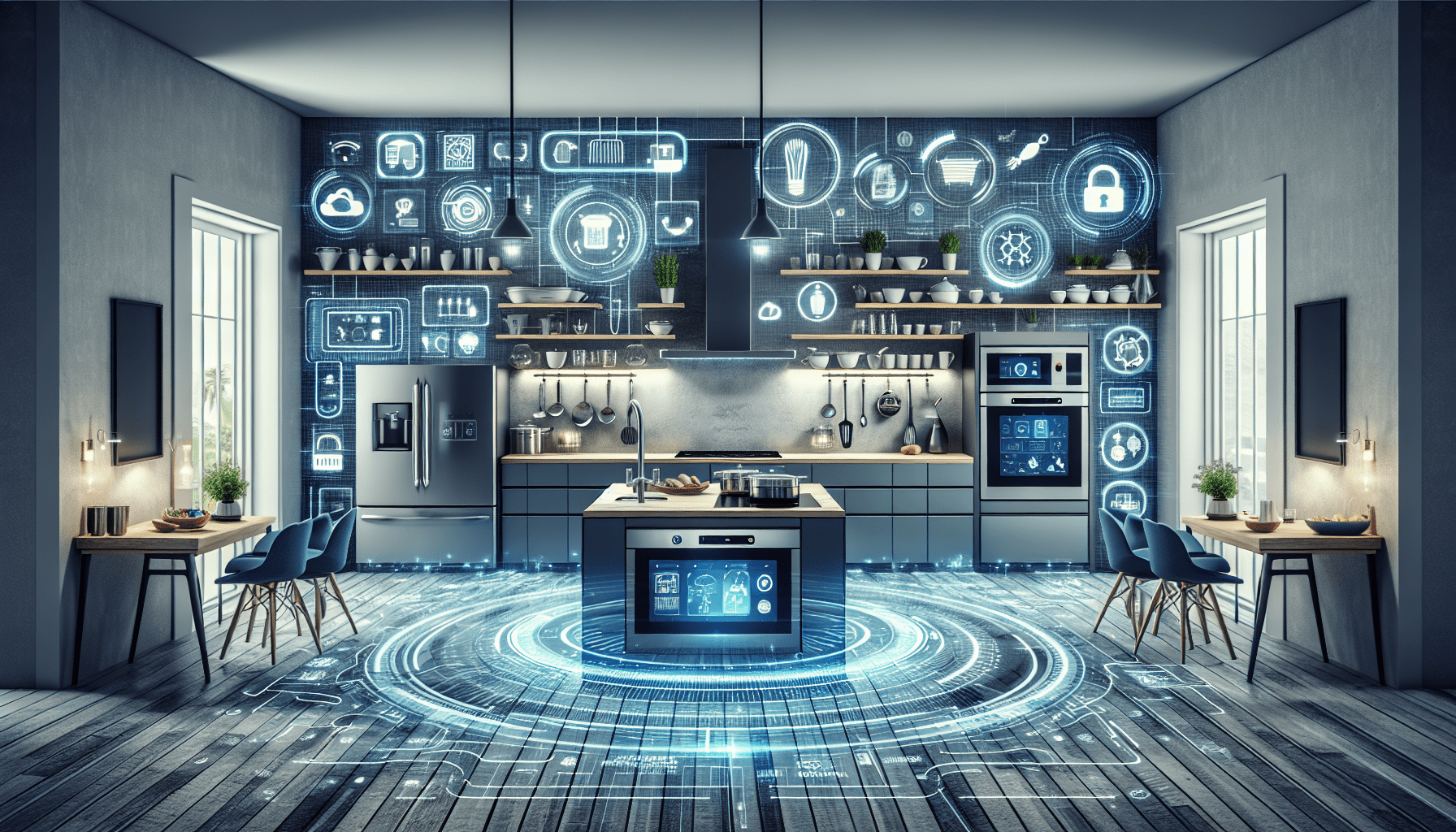
Connected Kitchen
Introduction to the concept of a connected kitchen
The concept of a connected kitchen refers to the integration of devices, appliances, and applications to create a seamlessly connected and interactive cooking environment. In a connected kitchen, various devices and appliances can communicate with each other, allowing for greater convenience, efficiency, and control over your cooking experience. From smart refrigerators that can send notifications to your phone to connected stove tops that can be controlled remotely, a connected kitchen offers unparalleled connectivity and convenience.
Benefits of a connected kitchen
A connected kitchen offers numerous benefits for homeowners. Firstly, it enhances convenience by allowing you to control and monitor your kitchen appliances and devices from a central hub or even your smartphone. Forgot to turn off the oven? No problem, simply check the app on your phone and turn it off remotely. Additionally, a connected kitchen can streamline tasks and reduce waste. For example, a smart refrigerator can keep track of food expiration dates and suggest recipes based on the ingredients you have, reducing food waste and simplifying meal planning. Lastly, a connected kitchen can create a more personalized and efficient cooking experience by remembering your preferences and adjusting settings accordingly.
Integration of devices and applications for a connected kitchen
To create a fully connected kitchen, it is important to integrate various devices and applications. Start by investing in smart appliances that are compatible with each other and can be controlled through a central hub or smartphone app. This allows you to have a centralized control system for all your kitchen devices. Additionally, there are various applications available that can further enhance your connected kitchen experience. For example, recipe apps that sync with your connected appliances can provide step-by-step cooking instructions and automatically adjust settings on your devices. By integrating devices and applications, you can create a truly connected and seamless cooking environment.
Emerging technologies for improving kitchen connectivity
As technology continues to evolve, new and emerging technologies are being developed to further improve kitchen connectivity. One such technology is the Internet of Things (IoT), which allows devices to connect and communicate with each other over the internet. IoT-enabled devices can seamlessly exchange data and perform tasks based on real-time information, enhancing the connectivity and efficiency of a connected kitchen. Furthermore, advancements in wireless connectivity, cloud computing, and artificial intelligence are also playing a significant role in improving kitchen connectivity. These technologies enable devices and appliances to communicate and share information in real-time, creating a more integrated and efficient cooking experience.
Flexible and Modular Layouts
Explanation of flexible and modular kitchen layouts
Flexible and modular kitchen layouts are designed to adapt to the changing needs and preferences of homeowners. These layouts prioritize functionality and allow homeowners to reconfigure their kitchens to suit their specific requirements. Unlike traditional fixed layouts, flexible and modular layouts offer versatility and can easily accommodate different activities and design preferences.
Advantages of flexible layouts in modern homes
Flexible layouts offer several advantages, especially in modern homes where adaptability is essential. Firstly, they maximize space utilization by allowing homeowners to use every corner effectively. By incorporating features such as pull-out shelves, adjustable cabinets, and modular storage solutions, flexible layouts ensure that no space goes to waste. Additionally, flexible layouts promote ergonomic design principles, ensuring that the kitchen is comfortable and easy to use. For example, by designing workstations at different heights, homeowners can work in a standing or seated position, reducing strain and fatigue. Lastly, flexible layouts offer the freedom to change the kitchen’s look and functionality easily. Whether you want to rearrange the layout, add or remove components, or switch between different design styles, a flexible layout allows you to do so without major renovations.
Design elements for creating adaptable kitchens
To create an adaptable kitchen, consider incorporating specific design elements and features. Firstly, focus on storage solutions that optimize space and allow for easy reconfiguration. This can include modular cabinets, adjustable shelving, and pull-out drawers that can be easily customized to fit your needs. Additionally, consider using movable kitchen islands or carts that can be easily repositioned to create additional counter space or to act as a serving area. Another important design consideration is the use of multipurpose fixtures and appliances. For example, a sink with an integrated cutting board can serve as both a prep area and a washing station. By incorporating these design elements, you can create a kitchen that can adapt to your changing lifestyle and requirements.
Customization options for modular kitchen designs
Modular kitchen designs offer a wide range of customization options, allowing homeowners to create a kitchen that truly reflects their style and preferences. From various cabinet finishes and materials to different countertop options and backsplash designs, modular kitchens offer limitless possibilities for customization. Additionally, modular storage solutions come in various shapes, sizes, and configurations, allowing you to choose the ones that best fit your organizational needs. Furthermore, modular appliances, such as cooktops and ovens, offer customization options in terms of size, design, and features. By opting for a modular kitchen design, you can personalize your kitchen and create a space that is truly tailored to your tastes and requirements.
Enhanced Energy Efficiency
Importance of energy efficiency in kitchens
Energy efficiency is a crucial aspect of modern kitchen design. By focusing on energy-efficient appliances and fixtures, homeowners can reduce their carbon footprint, lower their energy bills, and contribute to a greener future. Kitchens are one of the most energy-intensive areas in the home, with appliances such as refrigerators, ovens, and dishwashers consuming a significant amount of energy. By prioritizing energy efficiency, homeowners can make a positive impact on the environment while saving money on their energy expenses.
Technological advancements for energy-efficient appliances
In recent years, there have been remarkable technological advancements in energy-efficient appliances. Many appliances now come with energy-saving features such as smart sensors, LED lighting, and improved insulation. For example, refrigerators now come with energy-saving modes that optimize temperature settings and reduce energy consumption. Additionally, dishwashers have improved water-saving features that minimize water usage and electricity consumption. Furthermore, advancements in induction cooking technology have made induction cooktops an energy-efficient alternative to traditional gas or electric burners. By investing in energy-efficient appliances, homeowners can reduce their energy consumption and create a more sustainable kitchen.
Integration of renewable energy sources in kitchen design
Integrating renewable energy sources into kitchen design is another way to enhance energy efficiency. Solar panels, for example, can be installed on the roof of a home to generate electricity, which can then be used to power kitchen appliances. By harnessing the power of the sun, homeowners can reduce their dependence on traditional energy sources and decrease their carbon footprint. Additionally, incorporating natural lighting into kitchen design can reduce the need for artificial lighting during the day, further reducing energy consumption. By embracing renewable energy sources, homeowners can create a kitchen that operates sustainably and efficiently.
Sustainability considerations in kitchen lighting
When it comes to kitchen lighting, there are several sustainability considerations to keep in mind. Firstly, opt for energy-efficient LED or CFL bulbs instead of traditional incandescent bulbs. LED and CFL bulbs consume less energy, have a longer lifespan, and produce less heat. Additionally, consider installing motion sensors or smart lighting systems that automatically turn off lights when the kitchen is not in use. This reduces unnecessary energy consumption and lowers electricity bills. Furthermore, maximize natural lighting by incorporating large windows or skylights into kitchen design. Natural lighting not only reduces the need for artificial lighting but also creates a warm and inviting atmosphere in the kitchen. By focusing on sustainable lighting solutions, homeowners can minimize their environmental impact and increase energy efficiency in their kitchens.
Smart Storage Solutions
Introduction to smart storage solutions
Efficient storage is crucial in any kitchen, regardless of its size. Smart storage solutions are designed to optimize space utilization, improve organization, and simplify access to kitchen essentials. From ingenious cabinet designs to high-tech organization systems, smart storage solutions help homeowners maximize the storage capacity of their kitchens while maintaining a clutter-free and functional space.
Benefits of efficient storage in kitchens
Efficient storage in kitchens offers numerous benefits. Firstly, it improves organization and reduces clutter, making it easier to find and access items when needed. This eliminates the frustration of rummaging through disorganized cabinets and drawers. Secondly, efficient storage allows homeowners to maximize space utilization, especially in smaller kitchens. By utilizing innovative storage solutions such as pull-out shelves, vertical dividers, and corner organizers, homeowners can make the most of every inch of available space. Lastly, efficient storage can enhance the aesthetics of a kitchen by keeping countertops and surfaces clear of unnecessary clutter, creating a clean and visually appealing environment.
Innovative storage ideas for small spaces
For small kitchens, innovative storage ideas are essential to maximize space utilization. One such idea is the use of vertical storage solutions, such as hanging pots and pans racks or magnetic knife strips mounted on the walls. This frees up valuable cabinet space while keeping essential kitchen tools within reach. Additionally, utilize the space between cabinet tops and the ceiling by installing open shelves or cabinets with extended height. This provides additional storage space for items that are used less frequently or that are purely decorative. Furthermore, consider utilizing the inside of cabinet and pantry doors by installing hooks or pockets for additional storage. These innovative storage ideas can make a significant difference in small kitchens, allowing homeowners to optimize space and keep their kitchen organized.
Integration of smart organization systems in kitchen cabinets
Smart organization systems can revolutionize the way we store and access items in our kitchen cabinets. These systems often utilize adjustable shelves, dividers, and pull-out mechanisms to optimize storage space and improve organization. For example, a smart cabinet system can have shelves that can be adjusted in height or width to accommodate different item sizes. Additionally, pull-out spice racks or pantry shelves can make it easier to access items at the back of the cabinet without having to empty the entire contents. Furthermore, there are now smart cabinet systems with built-in sensors that can track the inventory of items stored and even suggest recipes based on what is available. By integrating smart organization systems, homeowners can create a highly efficient and user-friendly storage solution in their kitchen cabinets.
Health and Wellness Features
Growing focus on health and wellness in kitchen design
There is a growing focus on health and wellness in kitchen design as homeowners increasingly recognize the importance of creating a space that promotes well-being. The kitchen is not only a place for preparing meals but also a space where families gather and connect. By incorporating health and wellness features into kitchen design, homeowners can create a space that supports a healthy lifestyle and enhances overall well-being.
Incorporating ergonomic principles in kitchen layouts
Ergonomic principles play a crucial role in creating a kitchen that is comfortable and easy to use. By designing kitchen layouts that prioritize ergonomics, homeowners can reduce strain and fatigue and minimize the risk of injuries. This can include considerations such as the height and placement of countertops, sinks, and appliances to ensure that they are at optimal working levels. Additionally, incorporating features such as soft-close cabinet doors and drawers, easy-to-reach storage, and non-slip flooring can further enhance the ergonomic qualities of the kitchen. By promoting ergonomics, homeowners can create a kitchen that is not only aesthetically pleasing but also promotes comfort, safety, and overall well-being.
Advancements in air and water purification technologies
The quality of air and water in the kitchen can have a significant impact on health and well-being. Therefore, advancements in air and water purification technologies are increasingly being incorporated into kitchen design. Air purifiers with advanced filtration systems can help remove airborne pollutants, allergens, and odors, creating a healthier indoor environment. Additionally, water purification systems, such as under-sink filters or faucets with built-in filters, can effectively remove contaminants, ensuring that the water used for cooking and drinking is clean and safe. By integrating these purification technologies, homeowners can create a kitchen that prioritizes health and well-being for themselves and their families.
Integration of smart appliances for healthier cooking
Smart appliances can play a role in promoting healthier cooking habits. For example, smart ovens often come with pre-programmed cooking settings for healthier meals, such as steaming and grilling options. Additionally, smart appliances can provide real-time nutritional information, helping homeowners make informed choices about their meals. Some smart appliances even have built-in features that can help track calorie intake or suggest healthier alternatives based on ingredients available. By integrating smart appliances into the kitchen, homeowners can simplify and enhance their cooking experience while making healthier choices.
Augmented Reality for Kitchen Design
Overview of augmented reality (AR) in kitchen design
Augmented reality (AR) is a technology that overlays virtual elements onto the real world, enhancing our perception and interaction with the environment. In the context of kitchen design, AR can be used to visualize and plan kitchen renovations before any physical changes are made. By using specialized software or applications, homeowners can see virtual representations of their desired kitchen design in real-time, allowing them to make informed decisions and visualize the end result before investing in any actual renovations.
Benefits of using AR for visualizing kitchen renovations
Using AR for visualizing kitchen renovations offers several benefits. Firstly, it allows homeowners to have a realistic understanding of how their planned renovations will look in their existing space. This can help avoid costly mistakes and renovations that do not meet expectations. Secondly, AR enables homeowners to experiment with different design elements, such as cabinet styles, countertop materials, and color schemes, without having to physically change anything. This saves time and money by allowing for easy exploration of design options. Lastly, AR can help homeowners communicate their vision to contractors or designers more effectively, ensuring that everyone is on the same page and reducing the chances of misunderstandings.
Tools and applications for virtual kitchen planning
There are several tools and applications available for virtual kitchen planning using AR technology. These tools typically require homeowners to upload pictures or videos of their existing kitchen space, which can then be used as a base for visualizing different design options. Some applications allow users to virtually place and adjust virtual objects, such as cabinets, appliances, and fixtures, in real-time, giving a realistic representation of how the new design will look. Additionally, some tools provide virtual walk-throughs or 360-degree views of the planned renovations, allowing homeowners to fully immerse themselves in the virtual space. By utilizing these tools and applications, homeowners can take the guesswork out of kitchen renovations and confidently plan their dream kitchen.
Future possibilities of AR in personalized kitchen design
As AR technology continues to evolve, there are numerous exciting possibilities for its use in personalized kitchen design. In the future, it may be possible to virtually test different layouts and configurations in real-time, allowing homeowners to see how changes in the kitchen’s layout will affect functionality and flow. Additionally, AR could be used to create interactive shopping experiences, where homeowners can virtually try out different appliances, materials, and finishes before making any purchasing decisions. This personalized approach to kitchen design can help homeowners feel more confident and satisfied with their choices, ultimately resulting in a kitchen that is perfectly suited to their tastes and needs.
Integration of Artificial Intelligence (AI)
Explanation of AI in kitchen appliances
Artificial intelligence (AI) is revolutionizing the way we interact with kitchen appliances. AI refers to the simulation of human intelligence in machines, enabling them to perform tasks that typically require human intelligence, such as speech recognition and problem-solving. In kitchen appliances, AI is used to enhance functionality, automation, and user experience, making our kitchens smarter and more intuitive.
Advantages of AI-powered features in cooking
AI-powered features in cooking appliances offer several advantages. Firstly, they simplify cooking processes by automating tasks and providing real-time guidance. For example, AI-enabled ovens can recognize different types of food and automatically adjust cooking times and temperature settings to ensure perfect results. Additionally, AI can offer personalized cooking recommendations based on individual preferences and dietary restrictions, making meal planning easier and more enjoyable. Furthermore, AI-powered appliances can learn from user behavior and adapt their features and settings accordingly, creating a more tailored and efficient cooking experience.
Examples of AI-enabled smart kitchen devices
There are numerous AI-enabled smart kitchen devices available that showcase the capabilities of AI in the kitchen. For example, smart refrigerators can use AI to analyze the contents of the fridge and suggest recipes based on the available ingredients. AI-powered cooking assistants can provide step-by-step instructions and voice-controlled guidance, making it easy to follow recipes hands-free. Additionally, AI can be integrated into kitchen scales or appliances to help measure and portion ingredients accurately, ensuring consistent results in cooking and baking. These examples demonstrate how AI is revolutionizing the way we cook and interact with our kitchens.
Potential for AI to assist in meal planning and recipe recommendations
One exciting potential for AI in the kitchen is its ability to assist in meal planning and recipe recommendations. By analyzing individual preferences, dietary restrictions, and even nutritional needs, AI can offer personalized meal suggestions and recipe recommendations. This can help homeowners discover new dishes, experiment with different flavors, and diversify their culinary repertoire. Additionally, AI can take into account factors such as seasonality and local availability of ingredients to provide relevant recipe ideas. By utilizing AI to assist in meal planning and recipe recommendations, homeowners can make the most of their kitchen and create a truly personalized and enjoyable cooking experience.
In conclusion, the future of kitchens is filled with exciting possibilities. From sustainable materials and smart appliances to automation and robotics, the kitchen of tomorrow is becoming more connected, efficient, and user-friendly. With the integration of augmented reality, artificial intelligence, and health-focused features, homeowners can create kitchens that are not only visually stunning but also cater to their individual needs and promote well-being. By embracing these advancements in kitchen design, we can look forward to a future where cooking becomes more enjoyable, convenient, and sustainable. So why wait? Start transforming your kitchen today and get ready to experience the kitchen of the future.

